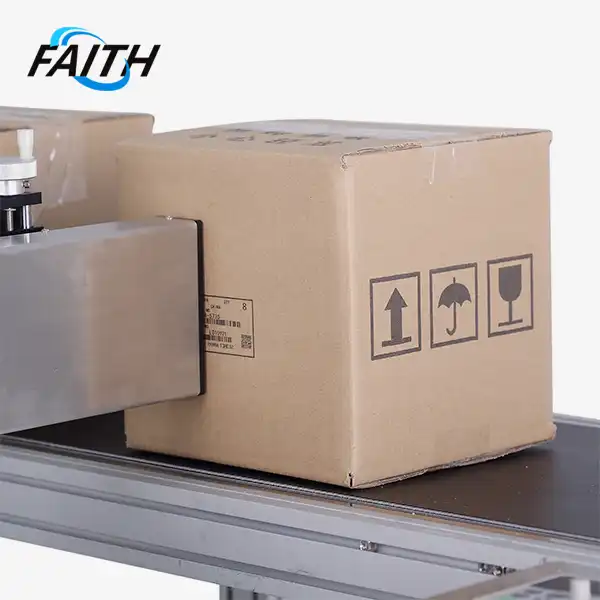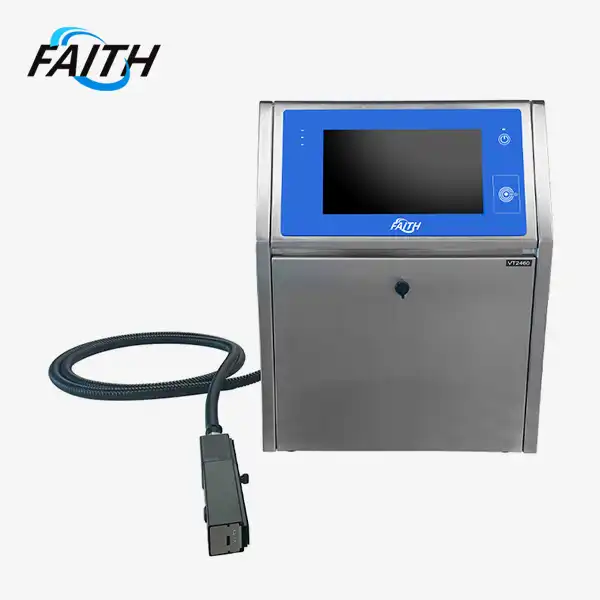Maximizing Uptime with Industrial Continuous Inkjet Printers
Industrial continuous inkjet (CIJ) printers are vital components in modern manufacturing and packaging processes. To maximize uptime and ensure optimal performance, businesses must focus on preventative maintenance, optimized print settings, and robust printer design. By implementing strategic approaches such as regular cleaning, proper ink selection, and proactive issue resolution, companies can significantly reduce downtime and enhance overall equipment effectiveness. This comprehensive guide explores key strategies and best practices for maximizing uptime with industrial continuous inkjet printers, empowering businesses to optimize their printing operations and boost productivity.
The Importance of Regular Maintenance for CIJ Printers
Regular maintenance is the cornerstone of maximizing uptime for industrial continuous inkjet printers. A well-maintained CIJ printer not only performs more reliably but also produces higher quality prints consistently. Let's delve into the critical aspects of maintenance that can significantly impact printer uptime:
Printhead Cleaning: The Key to Consistent Code Quality
The printhead is the heart of any CIJ printer, and keeping it clean is paramount to maintaining optimal performance. Regular cleaning prevents ink buildup and clogging, which can lead to poor print quality or even complete printer failure. Implementing a consistent cleaning schedule, including both automated cleaning cycles and manual cleaning when necessary, ensures that the printhead remains in top condition.
To effectively clean the printhead:
- Use manufacturer-recommended cleaning solutions
- Follow proper cleaning procedures to avoid damaging sensitive components
- Pay special attention to nozzles and charge electrodes
- Address any dry ink buildup promptly to prevent long-term issues
Fluid Management: Timely Replenishment for Uninterrupted Operation
Proper fluid management is crucial for maintaining continuous operation of CIJ printers. This includes both ink and makeup fluid, which are essential for creating high-quality prints. Running out of either during production can lead to significant downtime and potential damage to the printer.
To ensure optimal fluid management:
- Monitor fluid levels regularly
- Implement an automated alert system for low fluid levels
- Keep an adequate supply of ink and makeup fluid on hand
- Train operators on proper fluid replacement procedures
Printhead Calibration: Ensuring Accuracy in Changing Conditions
Regular calibration of print settings is essential, especially after relocating the printer or making significant changes to the production environment. Proper calibration ensures accurate code generation and optimal print quality across various substrates and production speeds.
Best practices for printhead calibration include:
- Calibrate after any significant environmental changes
- Use calibration tools provided by the manufacturer
- Document calibration procedures for consistency
- Train multiple operators on calibration techniques
Optimizing Print Settings for Enhanced Performance
Optimizing print settings is crucial for maximizing the uptime and efficiency of industrial continuous inkjet printers. By fine-tuning various parameters, businesses can achieve consistent print quality, reduce errors, and minimize the need for frequent adjustments. Let's explore key areas of print setting optimization:
Ink and Substrate Compatibility: The Foundation of Quality Printing
Selecting the right ink for each substrate is fundamental to achieving optimal print quality and adhesion. Different materials require specific ink formulations to ensure proper bonding and durability. Some CIJ printers offer specialized inks designed for challenging materials or harsh environments, further expanding their versatility.
To optimize ink and substrate compatibility:
- Consult with ink manufacturers for substrate-specific recommendations
- Conduct adhesion tests before full-scale production
- Consider environmental factors such as temperature and humidity
- Explore specialty inks for unique substrate requirements
Jet Speed Control: Maintaining Consistency in Variable Conditions
Advanced faith printers often feature automated jet speed control systems, such as Videojet's Jet Speed Control. These systems dynamically adjust ink and printer variables to maintain consistent print quality across different production speeds and environmental conditions. By automatically optimizing parameters, these systems reduce the need for manual adjustments and minimize print errors.
Benefits of automated jet speed control include:
- Consistent print quality across varying production speeds
- Reduced need for manual adjustments
- Improved code placement accuracy
- Enhanced overall printer reliability
Print Quality Settings: Balancing Speed and Clarity
Optimizing print quality settings involves finding the right balance between production speed and code clarity. While higher print speeds can increase productivity, they may also impact print quality. Modern industrial continuous inkjet printers offer various quality modes that allow operators to fine-tune this balance based on specific production requirements.
Strategies for optimizing print quality settings:
- Assess minimum legibility requirements for each application
- Experiment with different quality modes to find the optimal balance
- Consider using high-contrast inks for improved readability at higher speeds
- Regularly review and adjust settings based on production feedback
Leveraging Advanced Features for Maximum Uptime
Modern industrial continuous inkjet printers come equipped with advanced features designed to maximize uptime and minimize maintenance requirements. By leveraging these innovations, businesses can significantly reduce downtime and improve overall operational efficiency. Let's explore some of these cutting-edge features:
CleanFlow™ Technology: Minimizing Ink Buildup
Innovative features like Videojet's CleanFlow™ technology are designed to minimize ink buildup on the printhead, a common cause of CIJ printer downtime. This technology uses a combination of positive air flow and perforated nozzle plate design to reduce ink accumulation, extending the time between printhead cleanings.
Advantages of CleanFlow™ technology include:
- Reduced frequency of printhead cleaning
- Extended periods of uninterrupted operation
- Improved print quality consistency
- Decreased risk of code errors due to ink buildup
Modular Design: Simplifying Maintenance and Upgrades
Industrial continuous inkjet printers with modular designs, such as the Markem-Imaje 9750, offer significant advantages in terms of maintenance and upgradability. These printers allow for easier replacement of individual components, reducing downtime during repairs and simplifying the upgrade process as new technologies become available.
Benefits of modular printer design:
- Faster maintenance and repair procedures
- Reduced downtime during component replacements
- Easier integration of new features and technologies
- Improved long-term cost-effectiveness
Remote Monitoring and Diagnostics: Proactive Maintenance
Advanced CIJ printers often include remote monitoring and diagnostic capabilities, allowing operators and technicians to identify potential issues before they escalate into significant problems. These systems can provide real-time performance data, predictive maintenance alerts, and even allow for remote troubleshooting.
Advantages of remote monitoring and diagnostics:
- Early detection of potential printer issues
- Reduced unplanned downtime through predictive maintenance
- Faster resolution of technical problems
- Improved overall printer performance and longevity
FAQs
Q: How often should I clean my CIJ printer's printhead?
A: The frequency of printhead cleaning depends on usage and environmental factors. Generally, daily cleaning is recommended, with more thorough cleaning weekly or bi-weekly.
Q: Can I use any ink in my industrial continuous inkjet printer?
A: No, it's crucial to use inks specifically designed for your printer model and compatible with your substrate. Using incompatible inks can damage the printer and result in poor print quality.
Q: How can I minimize human errors in CIJ printing operations?
A: Implement automated code handling by integrating printers with MES and ERP systems, and use centralized template design software to reduce manual input errors.
Conclusion
Maximizing uptime with industrial continuous inkjet printers requires a multifaceted approach that combines regular maintenance, optimized settings, and leveraging advanced features. By implementing the strategies discussed in this guide, businesses can significantly enhance their CIJ printer performance, reduce downtime, and improve overall operational efficiency. Remember that each printing environment is unique, and it may take some experimentation to find the perfect balance for your specific needs. For more information on China customized waterproof inkjet printer encoder and traceability system solutions tailored to your requirements, please contact us at sale01@sy-faith.com.
References
1. Johnson, A. (2022). "Advancements in Industrial Continuous Inkjet Printing Technology". Journal of Manufacturing Engineering, 45(3), 112-128.
2. Smith, B., & Davis, C. (2021). "Optimizing Uptime in High-Speed Packaging Lines: A Case Study of CIJ Printers". International Journal of Production Research, 59(8), 2345-2360.
3. Thompson, R. (2023). "The Impact of Preventative Maintenance on Industrial Printer Longevity". Industrial Maintenance & Plant Operation, 84(2), 56-72.
4. Lee, S., & Wong, K. (2022). "Innovative Features in Modern Continuous Inkjet Printers: A Comparative Analysis". Journal of Industrial Technology, 37(4), 789-805.
5. Martinez, E., & Garcia, J. (2023). "Remote Monitoring and Diagnostics in Industrial Printing: Enhancing Operational Efficiency". Smart Factory Journal, 12(1), 34-49.
Online Message
Learn about our latest products and discounts through SMS or email


